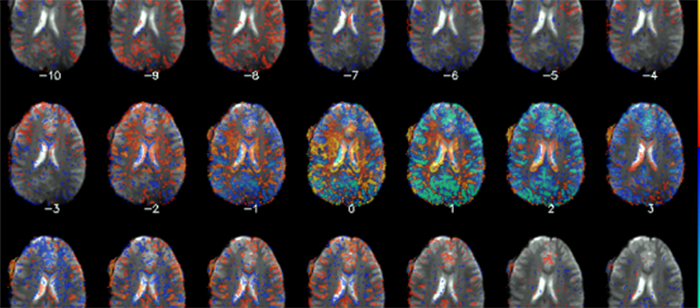
ENEE MS Thesis Defense
Graph-Theoretical Analysis using Data-Driven Features:
Application to Rehabilitation After Stroke
Jonathan Laney
1:30pm Friday, 3 April 2015, ITE 346, UMBC
The assessment of neuroplasticity after stroke through functional magnetic resonance imaging (fMRI) analysis is a developing field where the objective is to better understand the neural process of recovery and to better target rehabilitation interventions. In this study, the connectivity structure of the stroke-affected brain is analyzed before and after a rehabilitation intervention. The challenge associated with our fMRI data stems from the large amount of individual spatial variability exhibited by the dataset and the need to summarize entire brain maps by generating simple, yet discriminating features, to highlight differences in patients’ functional connectivity. The comparison of algorithms in terms of their ability to capture spatial variability for each subject is not straightforward due to the lack of a ground truth for real fMRI data.
We provide a graph-theoretical (GT) framework to effectively make such a comparison for real data. We investigate and discuss the important role of order selection for data that exhibits large amounts of subject variability. Furthermore, we demonstrate that Independent vector analysis (IVA) provides superior performance in preserving subject variability when compared with widely used methods such as group independent component analysis. We pair IVA with GT analysis to produce discriminative features, which highlight neuroplastic changes between the groups before and after intervention. Resulting GT features are shown to capture connectivity changes that are not evident through direct comparison of the group t-maps, i.e., brain maps obtained by a t-test taken across subjects’ spatial brain maps. Additionally, we compare the responders to the intervention with the non-responders and demonstrate that their relative improvements, as shown through our fMRI analysis, correspond to clinical findings. In this study, increased small worldness across components and greater centrality in key motor networks are demonstrated as a result of the intervention, suggesting improved efficiency in neural communication. Clinically, these results bring forth new possibilities as a means to observe the neural processes underlying improvements in motor function.
Committee: Drs. Tulay Adali (Chair), Joel Morris, Chuck LaBerge, Kelly Westlake and Charles Cavalcante